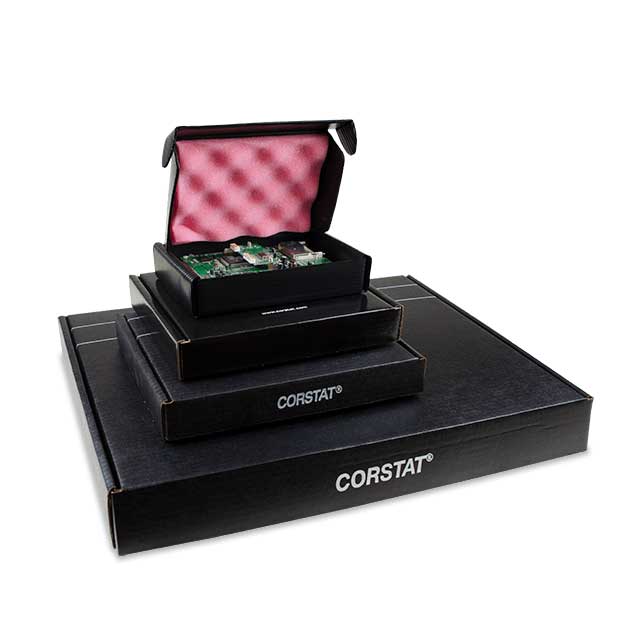
Antistatic or Electro Static Discharge (ESD) free packaging is generally required when shipping or transporting static sensitive components or circuit boards. Static charges are damaging to electronic components. Packaging materials that are used to transport or ship these type of components or devices are made of material that are either antistatic or static shielding. Each of those types of materials have different purposes and are not interchangeable.
Why use Anti-Static packaging?
Antistatic packaging should protect against a direct static discharge - like walking across a carpet and zapping the electronics. It should also protect against a static field that can also induce a charge on an electronic PCB or device.
It should not allow for tribocharging (or charging due to friction or rubbing) like when rubbing a balloon on your hair creates a static charge.
Static charges that can damage sensitive electronic components happen in a few ways:
- Improper handling of PCB’s or sensitive components
- Improper packaging both during internal use and in transportation
- Use of insulators that come in contact with PCB’s
Static charges can occur when a PCB with sensitive components rubs against or is in contact with an insulative material. Insulators do not allow an electric charge to flow to ground thereby discharging the charge. Therefore proper selection of packaging and handling material is critical to ensuring no static damage occurs.
Antistatic materials are designed to not create a static charge when sensitive devices are in contact with the material. PCB’s and components should be surrounded by or enclosed in anti-static material so that a charge does not develop through the handling and transportation steps. Typically anti-static packaging is pink or light blue to signify that the material is non-static generating.
This type of packaging is usually in the form of a bag that the PCB is placed in.
This can also be in the form of pink foam that is cushioning and also non static generating.
Most anti-static material is treated topically and has a shelf-life of approximately a year, after which the anti-static properties tend to degrade and then will begin to generate a charge. Anti-static bags and foam are good short term solutions to handling sensitive devices.
Anti-static packaging is a relatively inexpensive material that won’t cause static damage but it does not protect PCB’s or sensitive components from external static charges. If an operator walks across a carpet and has a static charge on their body and picks up a PCB in a pink anti-static bag that bag does not protect the contents from an external charge.
The only way to fully protect sensitive electronics is to have them properly shielded from external static charges… Static shielding packaging comes in bags and boxes that fully protect the contents from static damage. This type of bag or box creates a Farraday cage around the contents which prevents a static charge from impacting the electronics.
Typically static shielding bags are metallized with a very thin coating of polyester and aluminum metallization to insure that a static charge can be drained to any ground. The shielded boxes are typically black which is from a conductive carbon and they can be made of conductive corrugated or conductive fluted plastic.
Electronic components are most commonly packaged, handled and transported in static-safe material. Typically anti-static bags (pink or blue) or anti-static foam is used as the first step and then if there is a need for handling beyond the immediate area then static shielding steps are required. If the electronics needs to be transported elsewhere in the facility or outside the facility then a shielded box is required.
The most common misconception is that anti-static packaging is all you need for static safe handling. Anti-static materials are only effective when they are used in conjunction with other proper ESD procedures.
Putting PCB’s or components in pink anti-static bags or on pink anti-static foam is only effective if all other aspects of the facility are following proper ESD procedures like all operators must be fully grounded when handling a PCB, if the PCB is being moved around the facility it must be enclosed in a proper static shielded container (black box or metallized bag).
For proper ESD static shielding to work the device must be fully enclosed in the metallized bag or conductive box, using the bag as a “pot holder” does not offer any ESD protection. Just like the device must be completely inside the metal bag if using a conductive box there must be a lid or cover for the packaging to be effective.
Conclusion
Antistatic packaging has many benefits that make it the ideal choice for protecting your sensitive electronic components. This type of packaging is more resistant to damage, easier to handle, and less likely to cause allergies. If you are looking for an alternative to traditional packaging, consider antistatic packaging. You may be surprised at the benefits it can provide! Still have questions? Contact us today.
